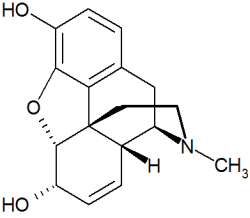SAN DIEGO -- Ligand Pharmaceuticals Incorporated (Nasdaq:LGNDE) announced today that the company has received approval from the FDA for the production of AVINZA(R) (morphine sulfate extended-release capsules) at the Cardinal Health (NYSE:CAH) facility located in Winchester, Kentucky. Ligand and Cardinal Health also have a productive, long-standing relationship for the finished-product production of Targretin(R) soft-gel capsules. AVINZA(R) is currently being manufactured for Ligand by Elan Corporation plc in its Gainesville, Georgia facilities.
Under the terms of an agreement announced in 2004, manufacturing of AVINZA will commence for a five-year term. Ligand has an option to extend for an additional two-year period. Financial terms of the contract were not disclosed.
"The FDA approval of the Cardinal Health facility for the manufacture of AVINZA(R) represents an important step toward realizing its full potential by providing us with a second source of supply to meet future patient demand. This significantly increases AVINZA production capacity and diversifies our supply chain, which we believe is necessary to fully support the long-term success of AVINZA," said Taylor Crouch, senior vice president, operations and president, international. "We are especially pleased with the rapid progress Ligand and Cardinal Health have jointly made on an accelerated time line to accomplish the technology transfer and facility approval. Cardinal Health has been a good manufacturing partner of Ligand, and we are pleased that this relationship now includes AVINZA. We expect to begin purchases under this agreement in early 2006 in addition to our current supplier."
About AVINZA
AVINZA (oral morphine sulfate extended-release capsules) is the first true once-a-day treatment for chronic moderate-to-severe pain in patients who require continuous, around-the-clock opioid therapy for an extended period of time. Approved by the FDA in March 2002, AVINZA consists of two components: an immediate-release component that rapidly achieves plateau morphine concentrations in plasma, and an extended-release component that maintains plasma concentrations throughout a 24-hour dosing interval. Ligand co-promotes AVINZA with Organon Pharmaceuticals USA Inc. in the United States. www.organonusa.com.
About Ligand
Ligand discovers, develops and markets new drugs that address critical unmet medical needs of patients in the areas of cancer, pain, skin diseases, men's and women's hormone-related diseases, osteoporosis, metabolic disorders, and cardiovascular and inflammatory diseases. Ligand's proprietary drug discovery and development programs are based on its leadership position in gene transcription technology, primarily related to Intracellular Receptors (IRs). For more information, go to www.ligand.com.
Caution Regarding Forward-Looking Statements
This news release contains certain forward-looking statements by Ligand that involve risks and uncertainties and reflect the company's judgment as of the date of this release. These statements include commencement of manufacturing, manufacturing capacity, diversity of supply chain, term of the agreement, options to extend the agreement, AVINZA sales, supply and success potential and purchase of products. Actual events or results may differ from Ligand's expectations. There can be no assurance that AVINZA will reach its potential or expectations, that manufacturing at the new site will be continuous or successful, that the agreement will continue for any particular time period, that supply will be diversified, that purchases will be made or fulfilled, or that our suppliers will be able to deliver products adequately and reliably in the future. Additional information concerning these and other risk factors affecting Ligand's business can be found in prior press releases as well as in the company's public periodic filings with the Securities and Exchange Commission, which are available via www.ligand.com. Ligand disclaims any intent or obligation to update these forward-looking statements beyond the date of this release. This caution is made under the safe harbor provisions of the Private Securities Litigation Reform Act of 1995.
COPYRIGHT 2005 Business Wire
COPYRIGHT 2005 Gale Group



